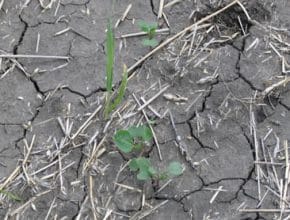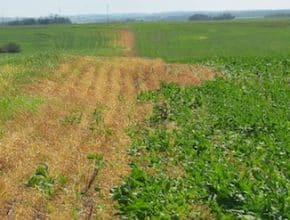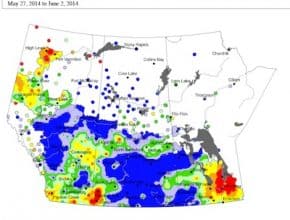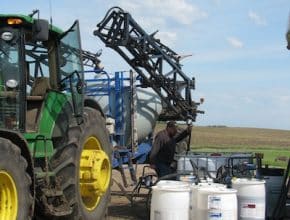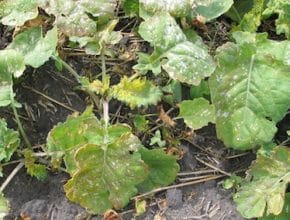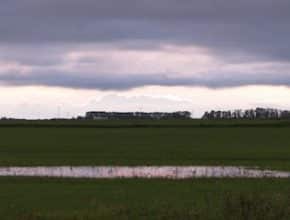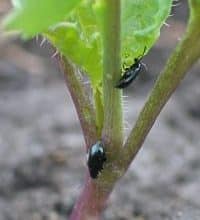When growers have canola stands of fewer than 4 plants per square foot — due to low seeding rates, poor seed survival, insects, crusting, frost, wind, etc. — they grapple with the question whether to reseed. An established canola stand with as few as 1-2 plants per square foot generally has higher economic potential than if were to reseed that…
June 11, 2014 - Issue 10
-
-
Sock it to wind. A little wind is OK, but take measures to reduce drift (shown above). Herbicide timing is more important that waiting to achieve full coverage from a fine spray. Flea-ing to the stems. In windy and cool conditions, flea beetles may duck for cover and feed on stems. Take a look. This hidden damage can be costly…
-
-
Here are the questions: 1. Growers have two key considerations when it comes to spraying — good coverage and drift management. What two objectives below will help you achieve good coverage while also reducing the drift risk? 2. Which situation is most likely to provide the greater economic return for a herbicide spray? 3. The best conditions for spraying herbicide…
-
How do you spray weeds in a timely fashion when every day seems too windy? Too windy, according to the Guide to Crop Protection, is wind above 15 km/h. But we know that some operators will go with winds of 20 km/h and maybe a bit above. Here are tips to improve performance and limit the drift risk in wind…
-
-
High winds may force flea beetles off leaf tops and down to leaf undersides and leaf stems. Stem feeding could make the flea beetle situation worse, since it takes just a few bites on a stem to nip off a whole cotyledon or sever the stem. Stem feeding, if it’s happening on a lot of plants, has a lower control…
-
Early season hail rarely has an impact on canola yield potential. Hailed seedlings usually come back very well. If hail breaks off both cotyledons or snaps the stem, these plants usually do not survive. But even in these severe cases, while individual plants may die, a whole canola crop is fairly resilient to early season hail when it comes to…
-
Canola needs a little bit of boron, and most Canadian Prairie soils have enough to meet this demand…

